If you like this post, help us share it
There are all sorts of mirrorless camera adapters out there to give you the possibility to mount your favourite lens.
In this post we will look at NEX-NIKON adapters for Sony NEX cameras. With an APS-C sensor fitted in a very compact body, the Sony NEXs became very attractive mirrorless cameras. They are small and very well spec’ed. With the introduction of the new NEX-7, NEX-5N and NEX-C3, the NEXs are even bigger performers than their predecessors. The new series of NEXs have greatly improved in all aspects on MP, FPS, ISO performance, HD video with 1080p and touch screen functions. Check out the new features in this post.
The NEXs have a very thin profile, only 18mm between the lens mount and the sensor, which means adapters can be designed to mount all sorts of third party lenses on to the NEXs. Many manufacturers have already came out with variety of adapters to mount different type of lenses.
If you are owners of Sony A mount lenses, then you have the privilege to use them on the NEXs ith AF via the A-Mount Lens to NEX Camera Mount Adapter.
For other third party lenses, there are no adapters that can maintain AF yet.
For Nikon lenses, try these NEX-NIKON adapters..
For Canon lenses, try these NEX-CANON adapters.
For Leica lenses, try these NEX-LEICA adapters.
For Pentax lenses, try these NEX-PENTAX adapters.
There are many NEX-NIKON adapters out there, the one we got has an aperture ring and is very well made, constructed with all metal/brass including the threads. It feels solid and has no plastic bits. In general there are two types of NEX-NIKON adapters, one with aperture ring and one without. The one with aperture ring will work on all Nikon lenses and the one without will only work with the Nikon D lenses.
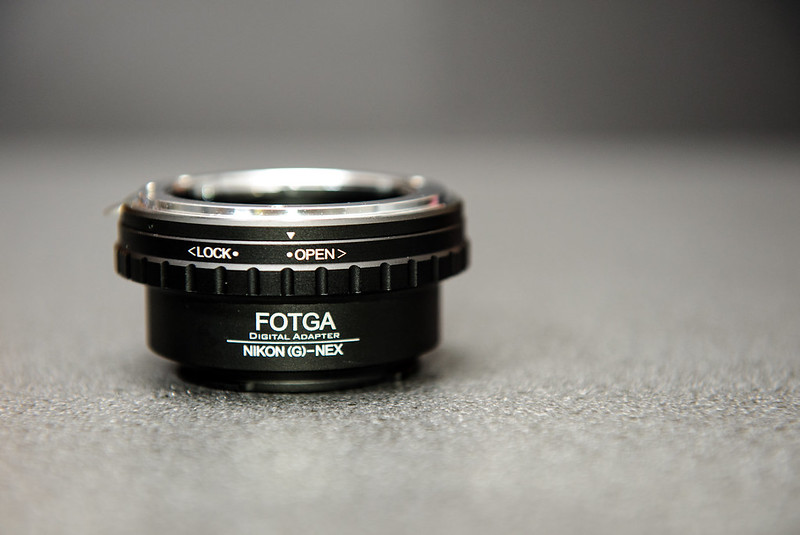
The adapter is similar size to the E-16mm f/2.8 pancake lens. It even weights more than the pancake lens. With the adapter, you can use all sorts of lenses with the NEX camera, including some of Nikon’s fast lenses, 24mm f/1.4, 50mm f/1.4 and 85mm f/1.4. The NEXs have a 1.5x crop factor just like any DX cameras. With the 50mm f/1.4 fitted, it becomes like a 75mm f/1.4, which is a great compact portrait lens.
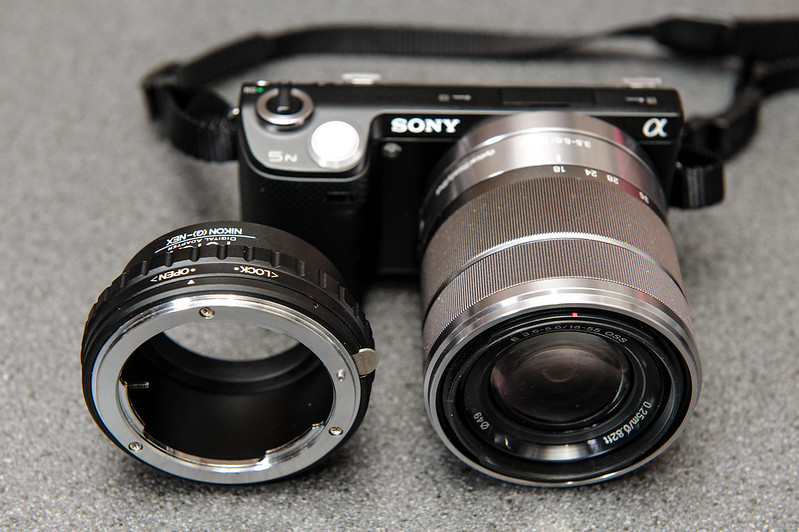

An adapter with aperture ring will work with both Nikon G and D lenses. For D lenses, just set the aperture ring to “Lock” position and use the aperture ring on the lens itself to control the aperture setting manually. For G lenses, use the aperture ring on the adapter to control the aperture settings. However, the aperture ring on the adapter has no f-stop scale, so you can’t tell which f-stop you are at. The camera doesn’t recognise the f stop setting, so it is left blank.

Here are the steps you need to know to set up the adapter.
1. In the camera menu – > go to setup –> Release w/o lens, change it to enable.
2. In the camera menu – > go to setup –> MF Assist, turn it on. This is not necessary but will help a lot with MF. Within the same menu, you can also turn on peaking mode to assist with MF. Personally, I left peaking mode off.
3. Put the adapter onto the camera first, just snuggle the adapter onto the E mount and twist to lock it in place. It doesn’t take a lot of force to set it in place, so if you find yourself needing to apply a lot of force, you are doing it wrong.
4. Mount your Nikon lens to the adapter. there is no lever to press, simply snuggle the lens onto the adapter and then twist to lock. Hold the adapter lever down to remove the lens.
5. If you are using a G lens, then you will need to use the aperture ring on the adapter to control the aperture setting. There are two positions: OPEN and LOCK, equivalent to opening and closing the aperture respectively. E.g. on the 50mm f/1.4, OPEN means f/1.4 and LOCK means f/22. You can set any f-stops in between, but there is no f-stop scale, you need to learn it as you go. What you can do is from the LCD preview, adjust the aperture until it give you the desire DoF.
6. With the adapter, aperture is controlled manually, so you can only shoot in M mode or A mode. Exposure metering is possible with the adapter.
7. When shooting, press the MF assist to get a 9.5x loupe of the image to help with your focusing.
8. Tips: I find it much easier to shoot in M mode, especially on NEX-5N which uses the same dial to toggle between aperture and shutter speed. With the adapter, the aperture is now controlled by the aperture ring and the shutter speed is controlled by the wheel dial, separating the two controls.
The adapter is perfect to use with the older D lenses like 35mm f/2 D, 50mm f/1.4 D and f/1.8 D which are all small and light weight. One of my favourites is the the Nikon 20mm f/2.8, which effectively becomes a 30mm f/2.8; a great focal length for street photography . The overall footprint of this setup is still very small. It is great for travel.


The adapter is a great accessory which opens up the possibility of mounting other great lenses. Unfortunately, with third party lens, you will lose AF functionality, so you have to adapt to manual focus. There are a few quick tips to make Manual Focus a bit easier on the NEXs. First enable MF assist. You can use this to set your focus precisely if you have the time. But if you need to manual focus very quick like in street photography, get familiar with using pre-focusing or zone focusing. Basically, pre-focus your camera to say 1 – 2m depending on how far you shoot your subject normally and then set your aperture to the highest that you can get away with, say f/8 or f/11. This creates a large DoF so your subject will be in focus even if it is not quite at your pre-set focused distance. Just click the shutter once your subject enters your “zone of focus”
Another way is to set your focus to hyper focal distance and you can forget about focus. For a detail explanation on this, check out this post. Simply set your camera focus to hyper focal distance using a large f-stop then you will get the maximum DoF. For example. with the 20mm f/2.8 at f/11 pre-focus the camera at the hyper focal distance which is 1.79m, then everything from 0.94m to infinity will be in focus. That is a huge DoF and you can just point and shoot knowing anything from 0.94m to infinity will be in focus.
The images here are all taken with the Nikon 20mm f/2.8 and 50mm f/1.4 wide open.
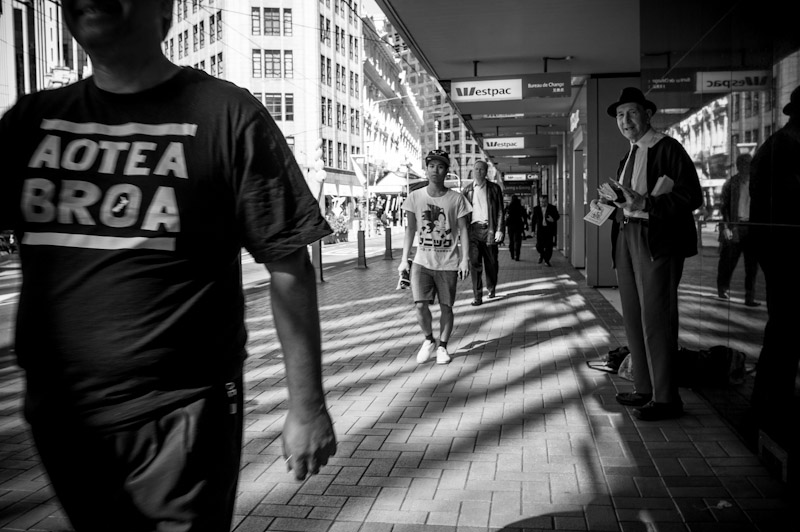
The exposure metering works perfectly with the adapter. In M mode, you can easily adjust the shutter speed by turning the wheel dial.
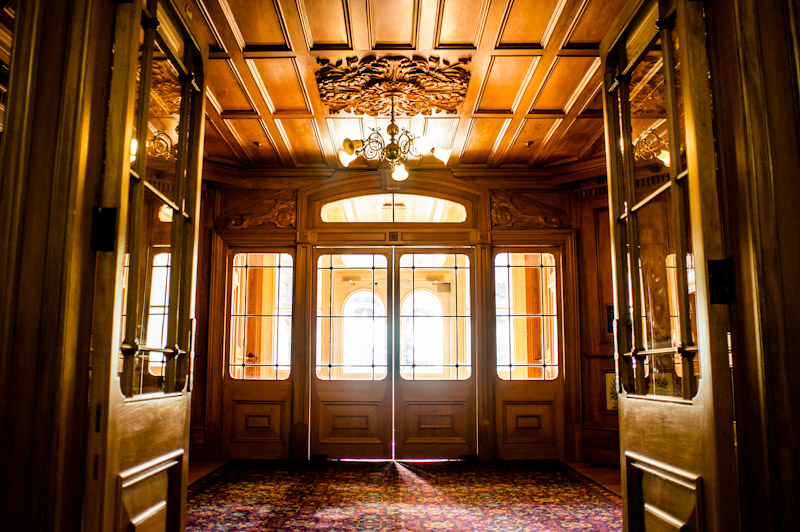
If you are planning to use an alternative lens on the NEX, you should use it fully. There is not much point to put a 35mm f/2 only to use it at f/4. Otherwise might as well use the kit lens 18-55mm which also has the coverage of 35mm @ f/4. While an alternative lens does not benefit from in camera chromatic aberration, vignette and distortion correction, shooting an alternative lens on the NEX is challenging and can be a lot of fun, you can get images that kit lens or other E mount lenses can’t produce.
Here, we took the camera to a local coffee for a field test and see what we can get out of it.

Most alternative lenses have built in aperture ring on the lens itself, you can feel the click and knowing that your aperture is changed.Nikon G lenses don’t. The adapter adds an aperture ring to control the aperture. The aperture ring is as quick as using the wheel dial

As far as fast wide angle lenses concern, there are the 16mm f/2.8 and 24mm f/1.8 with the latter costing as much as a D5100. But with an adapter, you can fit all sorts of cheaper, better, faster alternative lenses to the NEX. Leica Summicron 35mm f/2 anyone?

The NEXs has a larger sensor than mirrorless cameras, so they inheritably have better ISO performance and are much easier to get a shallower DoF. Their ISO and DoF performance are similar to DX cameras like D5100 and D7000. If you add an adapter, you can make use of all types of DSLR lenses, so you can shoot in low light and shoot wide open to create shallow DoF.
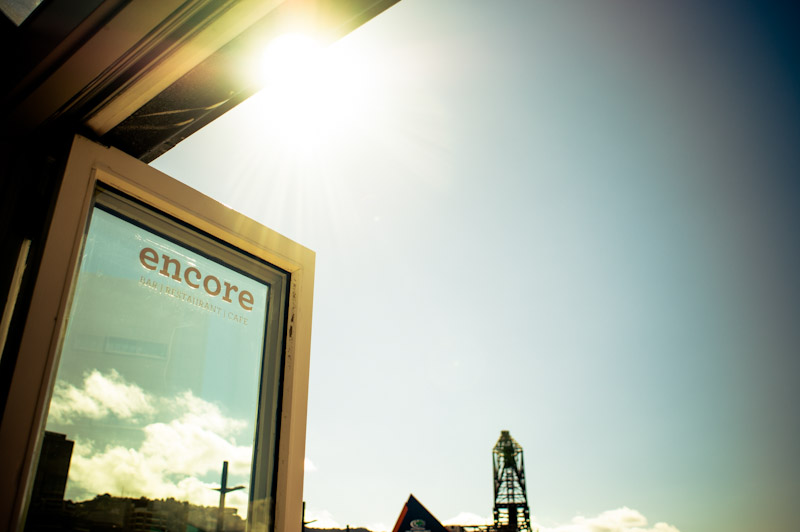

The kit lens 18-55m f/3.5-5.6 and the pancake lens 16mm f/2.8 are great travel lenses. They are very light and provide a good focal length coverage.
What’s possibly missing is may be a decent portrait lens, although the E mount has a 50mm f/1.8, but that is no 85mm f/1.4 or even 50mm f/1.4. We did mount the Nikon 84mm f/1.4 on the NEX and we loved it. It is equivalent to a 126mm f/1.4 and we will post up some images on our next blog post. Subscribe below and watch this space.
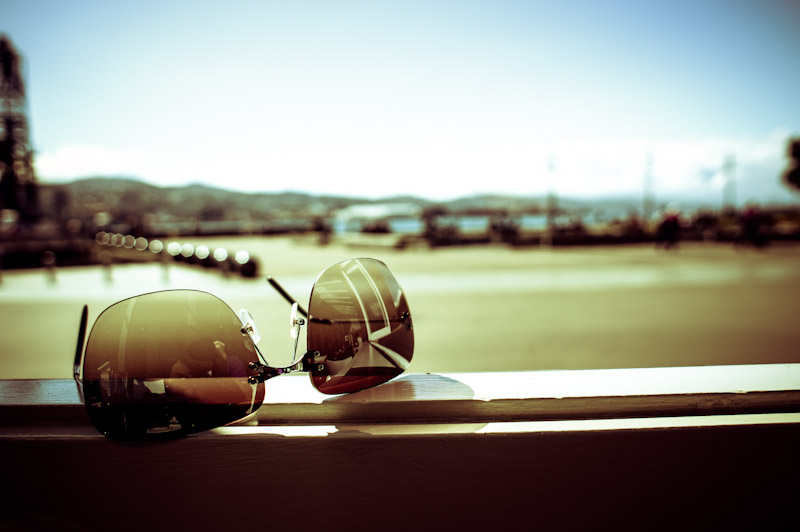


Where can I find the equipment seen on this site?
If you find this site useful and planning to purchase any of the equipment seen on this site, please show your support by purchasing your photo equipment at B&H Photo Video, or through any of the affiliate links seen on this site.


